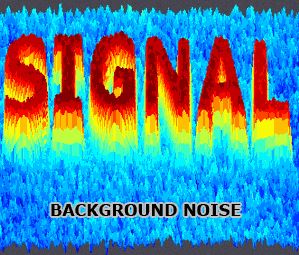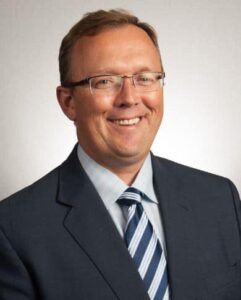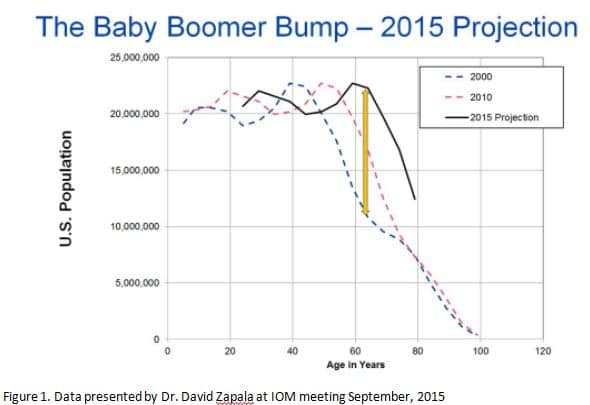“Signal & Noise” is a bimonthly column by Brian Taylor, AuD.
It’s human nature to slow down and gawk at the site of an accident. Even if it’s for a split second, the site of something unusual diverts our attention from ordinary tasks.
Over the past month there has been a lot of opportunities to gape, including abrupt mass firings of executives obscured by smokescreen philanthropy, accusations of white collar crime in which the alleged perpetrator remains surprisingly anonymous , controversial alliances with independent professional organizations, and continued downstream vertical integration. Further, the recent Starkey imbroglio is fueling speculation from industry insiders of a possible sale of the company; more consolidation looms.
News as Noise
It’s difficult, of course, to know what all this news signals to professionals and the patients they serve. Nevertheless, it has a high degree of palace intrigue, and it certainly fuels plenty of water cooler conversations in hearing clinics around the globe. Just about any roadside calamity will attract a crowd – why should our industry be any different?
Much of the gossip surrounding these recent industry events might be characteristic of the current cynicism in the business world. The weird mix of curiosity and distrust felt by many of us in light of these incidents might be reflective of a deeper problem permeating all of business. A recent article in The Economist adroitly suggests professionals have lost confidence in their business leaders, as
“one in every two leaders and managers are judged to be incompetent and ineffective.”
News as Signal
More critical to the long term survival of the profession is the news trickling out of Washington DC, where the Institute of Medicine (IOM) and the President’s Council of Advisors on Science and Technology (PCAST) have been discussing the current marketplace for hearing care services in the US. The mundanity of this news doesn’t quite have the ability to turn heads like a good old fashioned brouhaha between archrivals, but the future outcomes of these proceedings are likely to have a real impact on us.
Here is why: both of the IOM and PCAST advisory groups have been wrestling with issues related to the provision of accessible and affordable hearing care for adults. Given the rapidly aging population and historically static market penetration of hearing aids in the face of remarkable technological innovations, this is the real signal embedded in all of the cocktail noise emanating from industry.
Much of the reviews of these proceedings has been buried on the back pages of industry pubs. Thanks to the outstanding reporting of Karl Strom and Christa Nuber at the Hearing Review (and Mead Killion, Richard Einhorn and Holly Hosford-Dunn in HHTM) we know a little something about these Washington proceedings.
Fundamental Questions
There are three fundamental questions, I think, at the core of the evolving marketplace for hearing care services and worthy of deliberation and debate by all hearing care professionals. Each of these questions stands alone, but they are most certainly interconnected: address one of these three questions and the other two will be affected.
Q1: How do we contend with a rapidly aging population that often wants a fundamentally different relationship with a shortage of hearing care professionals?
According to Professor Laura Carstensen at Stanford University, an American born today has a projected average lifespan 20 full years longer than one born in 1925. And, for the first time in U.S. history, the number of people over the age of 60 exceeds those under age 15.
Dig deeper and you’ll find that the Graying of America is being led by the Baby-boomers. David Zapala, PhD, of Mayo Clinic presented the data shown on Figure 1 at the IOM meeting in mid-September. It’s a picture worth more than a thousand words because it shows the “silver tsunami” in action. It’s literally an age wave. As this glut of people born within 15 years of the WW II age, their sheer size changes healthcare markets dramatically – just ask the vision industry when this group turned 45 and needed reading glasses!
In addition to their size, Baby-boomers approach the market differently for services. They have an almost maniacal drive to live to be well over 100, while maintaining the vitality of a 40-something year old. Combine the size and scale of the Baby-boomer market with the fact there is a growing shortage of audiologists and hearing instrument specialists and you soon realize there is a potential bottleneck, if the bulk of these Baby-boomers decide to enter the marketplace for hearing care.
New approaches to triaging – quickly and accurately determining who is at risk for ear disease – are needed, as Dr. Zapala highlighted in his presentation of the Consumer Ear Disease Risk Assessment (CEDRA). This approach uses simple questions about health status and ear disease symptoms to quantify ear disease risk.
Audiologists need to take an active role in the testing and implementation of such triaging tools with a goal of maintaining the accurate identification of ear disease, while increasing access to hearing care treatment & management options for a growing aging population. Churning out routine audios in 20-30 minute increments is probably not going to accomplish this task.
More to Come
Fundamental questions #2 and #3 are reserved for the second half of this post, to be published her next week. Those questions are:
- How do we leverage the science, which continues to provide evidence of the impact of ARHL on all facets of life, including death to grow the demand for hearing care services?
- How do we bridge the gap between access and innovation?
Brian Taylor, AuD, is Senior Director, Clinical Affairs, for Turtle Beach/Hypersound. He continues to serve as Editor of Audiology Practices, the quarterly publication of the Academy of Doctors of Audiology. During the first fifteen years of his career, he practiced clinical audiology in both medical and retail settings. Since 2005, Dr. Taylor has held a variety of leadership & management positions within the hearing aid industry in both the United States and Europe. He has published over 50 articles and book chapters on topics related to hearing aids, diagnostic audiology and business management. Brian has authored three text books: Fitting and Dispensing Hearing Aids (co-authored with Gus Mueller), Consultative Selling Skills for Audiologists, and Quality in Audiology: Design & Implementation of the Patient Experience. His latest book, Marketing in an Audiology Practice, was published in March, 2015. Brian lives in Golden Valley, MN with his wife and three sons. He can be reached at [email protected] or [email protected].
feature image courtesy of Cambridge in Color








